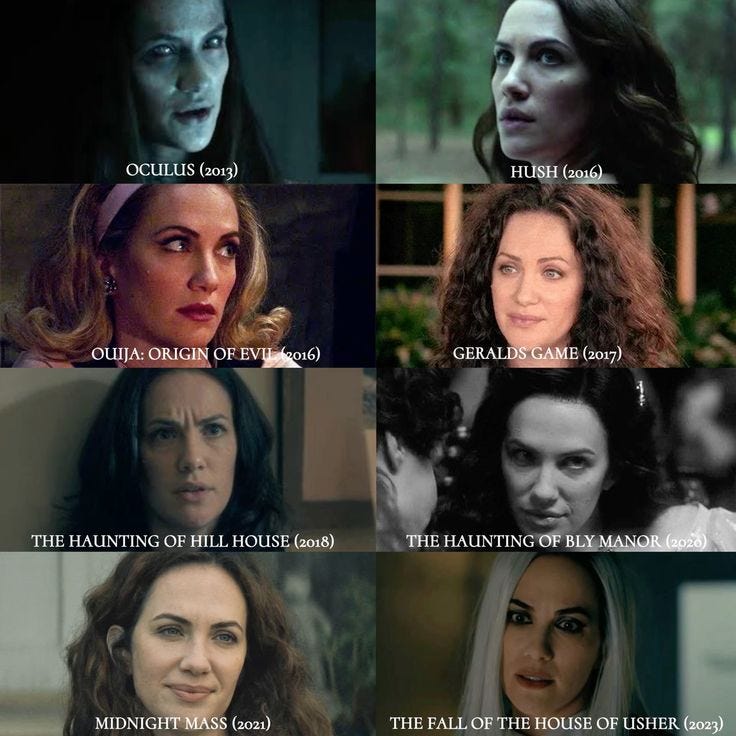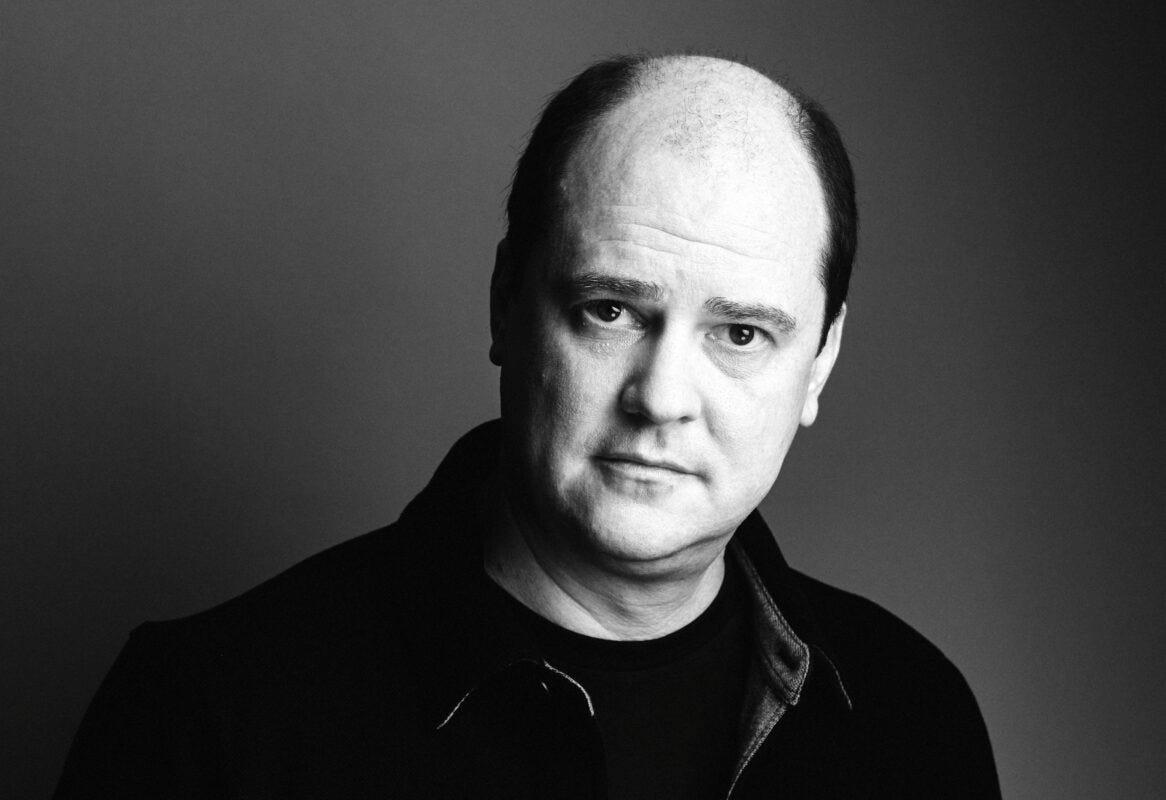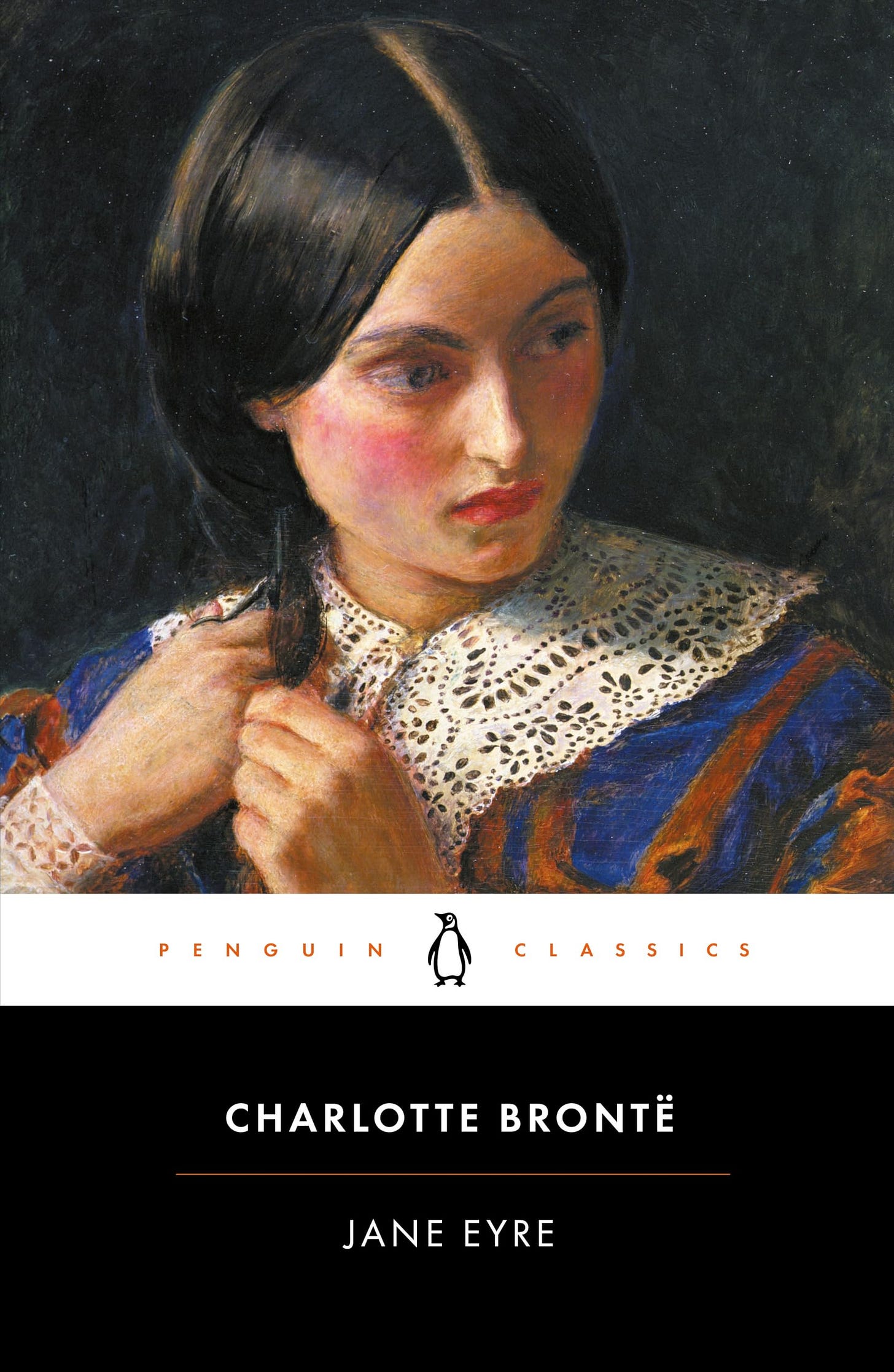Last week we discussed our first episode of Season 5 - Adaptations on The Novel Tea podcast. This episode included a book pair discussion between The Fall of the House of Usher by Edgar Allen Poe, and What Moves the Dead by T. Kingfisher. This discussion included a small portion dedicated to the Netflix adaptation of The Fall of the House of Usher directed by Mike Flanagan.
Though gothic novels are my favorite genre of books to read, and I have read and enjoyed my fair share of Stephen King horror stories, I have never been one to gravitate toward watching anything scary. Horror movies are for sleepovers with my best friends when we stay in a cabin-style Airbnb for the weekend and are just looking for a scary good time. Or for when my husband needs a good laugh.
So when I ventured into watching The Fall of the House of Usher (Netflix), I wasn’t sure what I thought I was expecting. You can hear my full thoughts on the Netflix adaptation of the episode here, but long story short, I thoroughly enjoyed it. Mike Flanagan adapted the original Poe story into something palatable for modern viewers, added interesting plot points, and uniquely interpreted the story. This led me to watch some of Flanagan’s other work and thus, this deep dive into Mike Flanagan himself.
Mike Flanagan
Mike Flanagan was born in Salem, Massachusetts in 1978. Surrounded by witchcraft and the essence of paranormal activity, combined with his love for filming on his family’s video camera, his life trajectory was set up for him early on.
I was terrified of horror. I couldn’t watch scary movies with my friends. I would pretend to be sick at sleepovers if they were watching a horror movie, so I could go home. Or I’d watch through my fingers, or look somewhere else in the room away from the television. Reading, I thought, would be a way to get better at it. I thought it would less scary if I was reading something because I would have control of it.
But the opposite is true. It’s much worse reading a scary story than seeing a scary movie because it stirs your imagination in an intense way. What happened, though, is that I got completely invested, especially with Stephen King, in the characters, so I had to force myself to keep reading these scary stories because I cared about what happened to the people on the page. What I realized eventually was that getting through a scary chapter or a scary scene in a movie was making me braver in very small increments. And that was an incredible revelation for me.
—Mike Flanagan in an interview with Baltimore Magazine (source)
I feel similarly to Flanagan in this aspect. I really can’t stand when horror movies are scary for no reason. I get caught up in the jump scares and tend to lose track of the plot because I get distracted in trying to protect myself from the next jump scare. When reading horror, I feel like I can imagine things as scary as I want them to be because I am in the safety of my own mind. This seemed to have backfired for Flanagan though, and his mind got ahead of him… but I think this benefited us as viewers because we still get the thrill of his scary stories but with the depth and analysis that keeps it engaging.
Flanagan’s Style
The sign of a great director is when you know who the director is just by the style of the film. After watching a good number of Mike Flanagan’s movies, I have definitely noticed specific commonalities that create a unique modus operandi.
Continuous Shots and Long Monologues
Continuous shots and long monologues are key elements of Flanagan’s films. I have seen some criticism that the decision to do this comes off as pretentious and boring, but I am watching a movie for the characters, the plot, and the art, and one of the best ways to drive the story forward is through dialogue, backstory, and impactful conversations. Continuous shots, whether the camera is following a character, or the camera is still and the characters move in and out of it, create a natural movement that really lets the viewer immerse themselves in the plot.
It wasn’t that we wanted to do long takes; it was that long takes seemed to be the best way to tell that particular chapter of that particular story, and so why not? Who knew if I’d ever be in a situation again when I was responsible for directing an entire season of television? This might be my only time at bat, so might as well swing for the fences.
—Mike Flanagan in an interview in Suntup (source)
The Haunting of Hill House, episode 6 called “Two Storms” is a 53-minute-long episode that looks like it is filmed in one shot. It is panning between two time jumps, multiple locations, and through the perspective of numerous characters, but gives the illusion of one single continuous take. There is a 17-minute portion of this episode that truly is one single take, which is shot brilliantly and so seamlessly that you almost don’t even notice it. It’s one of the best film scenes I have ever watched on television, and knowing what it took to film it makes it even more appreciated.
Jump Scares
Another key element to Flanagan’s directing style is jump scares or the lack thereof. My least favorite part of horror movies is jump scares. They freak me out, give me nightmares, and honestly, I do not see the need for them except that when they work it can be funny to see your friend freak out (it’s me, I am the friend). When a movie wants to be scary, I feel like jump scares are a lazy way to get the job done. I would so much rather feel fear through tension and atmosphere than have a decaying zombie face jump out of its grave.
Most of Mike Flanagan’s work does not rely on jump scares to build fear. Ironically, Flanagan actually broke a Guinness World Record for the most jump scares in a single episode of television as a response to his studio requesting more jump scares. He designed an episode of The Midnight Club to have 21 jump scares so that in the end, they would be rendered meaningless and defeat the point of them.
I think staying away from jump scares makes them more effective, and also allows for the audience to focus on the more important aspects of the story. This style choice is probably one of the biggest reasons for my love for Flanagan’s films because it gives you horror in a really thoughtful and intentional way.
Familiar Faces
If you are a fan of Mike Flanagan’s works, and you feel like you know the characters from somewhere, you’re not crazy. Flanagan likes to use the same actors for different roles in his films so they do feel like they have a touch of familiarity or nostalgia to them. “Flanaverse” is a term coined by Netflix after he released multiple mini-series such as Midnight Mass, The Haunting of Hill House, The Fall of the House of Usher, The Haunting of Bly Manor, and The Midnight Club on Netflix. Each show is its own self-contained story, but the reappearing characters make them feel like these stories are part of an overall universe.

This is an interesting choice, I always love looking into the backstory of how an actor or actress found their role, what made them gravitate to auditioning, and looking at the other end of things of why a casting director thought someone would be perfect for a role. Mike Flanagan had a funny response to this on Twitter.
I’ve really enjoyed going through Flanagan’s Netflix series and haven’t dove into his scarier movies such as Oculus or Ouija yet. As someone who still can’t wash their hair with their eyes closed since seeing The Grudge when I was in the 7th grade, I am pleasantly surprised at my bravery in trying out his Netflix adaptations at least (since they are way more palatable for non-horror fans). It really goes to show that when a director is good at what he does and passionate about his project, the genre doesn’t even matter, you just know it’s going to be a good watching experience.
— Neha
Up Next
This week we’ll be discussing Jane Eyre by Charlotte Bronte on The Novel Tea podcast. We can’t wait for you to listen in on this classic book and all its adaptations! Tune into the episode on February 26th, 2025.







So interesting!